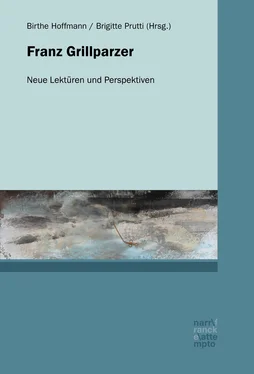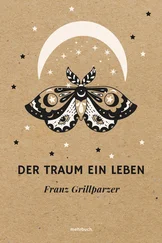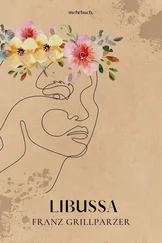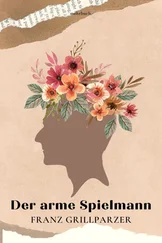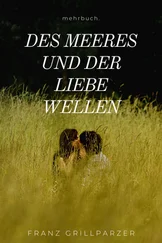The text’s fractured form finds its correspondence in its unstable temporality. As the title implies, the narrative is set in a monastery near the Polish town of Sandomierz. In the novella’s frame narrative, two knights, „Boten des deutschen Kaisers“ (SW 3: 119), are en route to the court of Johann Sobiesky, the Polish king who supported Leopold I, ruler of the Holy Roman Empire from 1658 until 1705, in his conflict with the Turks. Sobiesky was instrumental in beating back the Turkish troops in the famous 1683 Kahlenberg battle, which ended the last siege of Vienna. We can thus assume that the text’s frame narrative is set roughly around 1683, the time of Sobieski’s alliance with Leopold I.1 When the knights take up lodgings for the night at the monastery, the monk who later relates to them the framed narrative about the monastery’s origins states „‚Drei Jahre steht dies Kloster. Dreißig Jahre!‘“ (SW 3: 121) The monk’s uncertainty about the monastery’s age is all the more odd as we find out at the end of the narrative that it is he who founded the monastery. The events within the Binnenerzählung take up anywhere between three and five years. If we now want to know when these events took place, we need to count back from the approximate time the frame narrative takes place – 1683. But how many years? Three to five years, plus either three or thirty years, depending on when the monastery was actually built? The events the monk relates in the framed narrative could have then taken place as far back as the end of the Thirty Years’ War, around 1648, or roughly thirty years later.
The temporal instability created by the text’s simultaneously underdetermined and overcoded time references, taken together with the historical horizon within which the text was written, gesture both towards the dawn and towards the dusk of the Enlightenment: towards the Frühaufklärung , in the wake of the end of the Thirty Years’ War, the Peace of Westphalia, and the death of Descartes in 1650; and towards the Spätaufklärung , in the wake of the French Revolution, the death of Austria’s enlightened absolutist ruler Joseph II, Napoleon’s rise and fall, the end of the Holy Roman Empire, the new world order established at the Congress of Vienna, and the rise of Metternich’s repressive regime. It is roughly within this time frame that the struggle between the epistemological dominance of touch on the one hand and sight on the other plays out on the field of Western philosophy and science; and it is the crisis that results from this struggle that is, I maintain, of central import in Grillparzer’s Kloster bei Sendomir.
As the Enlightenment dawned, an epistemology in which knowledge could be gained through touch was increasingly marginalized and associated with the Middle Ages, now supposedly „an age when people groped about blindly.”1 The „Dark Ages“ were to be vanquished by a culture of light – as Foucault reminds us, one of the „great mythical experiences on which the philosophy of the eighteenth century had wished to base its beginning“ was the topos of „the man born blind restored to light.”2 The roots of this topos go back, of course, to Descartes. Foucault elaborates:
For Descartes and Malebranche, to see was to perceive (even in the most concrete types of experience, such as Descartes’s practice of anatomy, or Malebranche’s microscopic observations); but, without stripping perception of its sensitive body, it was a matter of rendering it transparent for the exercise of the mind: light, anterior to every gaze, was the element of ideality – the unassignable place of origin where things were adequate to their essence – and the form by which things reached it through the geometry of bodies; according to them, the act of seeing, having attained perfection, was absorbed back into the unbending, unending figure of light.3
As Foucault points out, though, a concept of perception through sight that takes place in a light both anterior and exterior to the observer is replaced already towards the end of the 18 thcentury by a concept that locates the power to see truth no longer in the light that previously surrounded objects of perception but rather in the gaze of the observer:
At the end of the eighteenth century, however, seeing consists in leaving to experience its greatest corporal opacity; the solidity, the obscurity, the density of things closed in upon themselves, have powers of truth that they owe not to light, but to the slowness of the gaze that passes over them, around them, and gradually into them, bringing them nothing more than its own light. The residence of truth in the dark centre of things is linked, paradoxically, to this sovereign power of the empirical gaze that turns their darkness into light.4
If we read the rise of an epistemology of sight with Foucault, we must remind ourselves that such an epistemology is neither homogenous in itself, nor did it remain stable over time.5 Moreover, the distance associated with an epistemology of sight did not simply replace the proximity associated with an epistemology of touch. Rather, as Constance Classen reminds us, cultural practices associated with touch and sight coexisted far into the 19 thcentury:
There can be no straightforward narrative of a decline in the cultural importance of touch accompanied by a corresponding rise in the cultural importance of sight. The sensory patterns of history are too complex. Older tactile practices long coexisted with the new emphasis on more disembodied modes of social interaction and religious practice.6
The European Enlightenment’s fraught terrain, marked by differing and shifting ways of finding and ascertaining truth, finds its Austrian manifestation in Grillparzer’s Vienna. Günter Schnitzler examines the tensions that prevail in Metternich’s Austria between the legacy of Joseph II. and Baroque Catholicism, between late-Enlightenment liberalism and conservatism:
Alle […] aufklärerischen und liberalen Tendenzen gehen […] eine im Grunde „unmögliche“ Verbindung mit dem geistigen und kulturellen Erbe der Donaumonarchie ein: die barock-katholische Welt bleibt in der Spätaufklarung Österreichs ebenso anwesend wie die Innerlichkeit und auch der Irrationalismus, der das direkte Eingreifen unbeherrschbarer Mächte möglich scheinen läßt; so werden noch die Wunder durch die Kirche nicht als Glaubensangelegenheiten, sondern auch in der Theorie und der Beweisbarkeit anerkannt. Das Barock-Gegenreformatorische erhält sich in gleicher Weise wie die religiöse und kulturelle Überlieferung bis hin zur habsburgnahen spanischen Welt, und zugleich rezipieren die Spätaufklärer der Grillparzer-Zeit die Texte von Leibniz, Wolff und vor allem von Kant.7
Grillparzer, an outspoken critic of Metternich8 and of the stifling effects his bureaucratic absolutism and censorship had on Austrian intellectual life, and an avid reader of Voltaire, Montesquieu, Diderot, and particularly Kant, nevertheless saw limits to the benefits enlightened reason could bestow upon humankind. Günter Schnitzler outlines Grillparzer’s skepticism towards the Enlightenment:
Grillparzer [erhob] fortwährend […] Vorwürfe vornehmlich gegen eine Aufklärung, deren Rationalismus zudem mit einem Erkenntnis- und Zukunftsoptimismus gepaart ist. Der skeptisch-desillusionistischen Haltung des österreichischen Spätaufklärers steht dies doch recht fern: Grillparzer hegte im Bereich der Ethik erhebliche Zweifel an einer beständigen Entwicklung zum „besseren Menschen“, wie es vor allem in rationalistischen Systemen propagiert wurde; aber auch in der Erkenntnistheorie zweifelte er – trotz der intensiven Kantstudien – an einer angemessenen, theoretisch fundierten Möglichkeit, Erfahrungswirklichkeiten zu fassen […].9
Читать дальше
